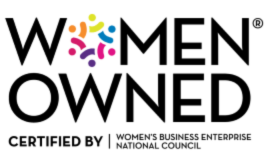Achieving More by Doing Less: A Guide to Prioritization
- Karen Hairston
- 0 Comments
- July 13, 2023
Achieving More by Doing Less: A Guide to Prioritization
Today we are exploring a topic that is an ongoing challenge for me—prioritization. In a world where female leaders often have to juggle multiple roles, face unique challenges, and combat unconscious biases, ensuring every moment and effort counts is even more critical. A well-prioritized day can enhance productivity, reduce stress, and improve work-life balance. Let’s dive into why and how mastering prioritization can be your secret weapon to soaring success.
The Importance of Prioritization
Prioritization, at its core, is about deciding the importance and order of tasks. It’s a life skill that impacts everyone. For individuals, effective prioritization means less stress, better time management, and more time for what truly matters. On a broader business scale, it becomes a catalyst for success. Well-prioritized businesses are more efficient, innovative, and adaptive. They can focus their resources on what truly drives growth and impact. Conversely, poor prioritization can lead to wasted resources, missed opportunities, and eventual failure.
For you, as a CEO or business owner, the importance of prioritization magnifies. Being at the helm of a business, you face additional challenges, from balancing business and family life to overcoming gender biases. Prioritization is your secret weapon to navigate these challenges effectively.
Let’s dive into one prioritization technique that can be used in several ways, the Eisenhower Matrix, my favorite tool! There are also other prioritization strategies, which I’ll cover in future posts.
The Eisenhower Matrix: A Valuable Tool for Prioritization
Named after the 34th President of the U.S., the Eisenhower Matrix is a simple yet powerful tool to categorize tasks based on urgency and importance.
Set up a 2×2 grid with the vertical axis labeled “Importance” and the horizontal axis labeled “Urgency.” This matrix yields four categories:
1. Urgent and Important: Do these tasks immediately.
2. Important, but not Urgent: Schedule these tasks for later.
3. Urgent, but not Important: Delegate these tasks.
4. Neither Urgent nor Important: Eliminate these tasks.
As an example, say you’re launching a new product line. Some tasks could be meeting with your design team to finalize product aesthetics (Urgent and Important), conducting market research for future expansions (Important but not Urgent), responding to a supplier’s email (Urgent but not Important – can be delegated), and scrolling through social media for competitor analysis (Neither Urgent nor Important – better sources for this information exist).
Different Spins on the Eisenhower Matrix
There are many other ways to use the Eisenhower Matrix for prioritization too. For example, if you’re at a point in your business where you know you have to delegate or outsource, but you’re not sure what to hand off, you can substitute “I’m good at” on the vertical axis and “I love doing” on the horizontal axis. Even though you may love doing several tasks, there are only so many hours in the day. In a nutshell, spend time playing to your strengths and delegate or outsource your weaknesses. Using this grid, this means spending as much of your time in the upper right quadrant and building out a team or outsourcing tasks in the other areas of the matrix.
If you are a solopreneur, you may have to wear all the hats for a while, but it helps to keep a list of what you should be delegating eventually. (Never underestimate the value of your time, though, and periodically consider hiring a virtual assistant, even part-time.)

There are other ways to use the matrix concept for prioritization, too, e.g., impact vs. probability for prioritizing risk, power vs. interest for stakeholders, and like/love vs. time/effort to determine what to delegate/outsource, implementation complexity vs. business value for strategic planning, and skill vs. will for team performance management. There are so many ways to use a 2×2 matrix to help determine what to focus on!
How to Implement Prioritization in Your Daily Routine
Knowing a technique is one thing; implementing it is another. The key is consistency! Whatever technique you choose, do it consistently. Personally, I create my to-do list for the next day at the end of the day. I limit the list to the top three priorities and number them in order of importance. I also have a few other “smaller” to-dos at the bottom of the list that are icing on the cake if I can get to them. If I have a day full of meetings, sometimes I’ll only have one or two main tasks on the to-do list. Be reasonable with yourself!
No journey is without obstacles, and the road to mastering prioritization is no different. Common barriers include procrastination, overestimating our capacity, and failure to delegate. Recognizing these barriers is the first step to overcoming them. Develop strategies such as breaking large tasks into smaller, manageable ones, learning to delegate, and setting realistic expectations. Every day is different, and you won’t always complete your priorities. Still, by focusing on what’s important and either eliminating, pushing off, or delegating the less important and less urgent items, there is a better chance that you will accomplish your top priorities.
Keep in mind that not all techniques will work for every situation. One technique may work to prioritize your day, but within a more specific project, another technique may work better. Adopt and adapt the methods to suit your work style and business needs. Technology can also play a significant role in tracking, managing, and prioritizing tasks, from simple task management apps to advanced project management tools. However, introducing a new app can take some time to figure out and roll out if you have a team, so it’s not an overnight miracle! I’ll cover roll-out and implementation in future posts.
Wrap-Up
From personal well-being to business success, prioritization has far-reaching effects, especially for female founders. By mastering this critical skill, you can navigate the labyrinth of responsibilities, challenges, and tasks confidently and efficiently. Remember, the journey to effective prioritization is a continuous process of learning and adaptation. The tools and techniques mentioned above are not rigid rules but flexible strategies you can tweak and tailor to your unique needs.
Growing Successfully But Feeling the Cultural Cost?
Your business is scaling, but something doesn't feel quite right. You're watching your company grow while worrying about preserving what makes it special. The processes that once worked smoothly now feel strained, and you're spending more time putting out fires than leading with vision.
The solution isn't choosing between growth and culture—it's building systems that support both. My 3S Profit Optimizer framework helps you secure more clients, streamline operations, and supercharge scalability while protecting what makes your company unique. I've helped numerous businesses scale thoughtfully without losing their soul.
Let's create processes that strengthen—not strain—your culture. Take action now and click below.
Related Posts
-1.png?width=900&name=Hubspot%20Blog%20Feature%20image%20(5)-1.png)






